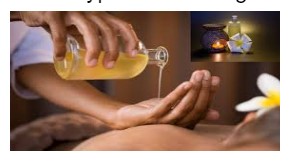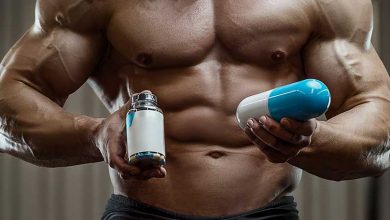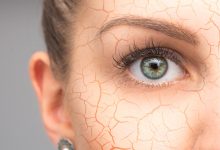How is Swedish Massage Different from Other Types of Massage?
How is Swedish Massage Different from Other Types of Massage?

1. Introduction
Massage therapy has been a staple of holistic health and wellness for centuries, offering numerous benefits ranging from stress relief to improved physical function. Among the various types of massage therapies available, Swedish massage stands out as one of the most popular and well-recognized forms. But what sets Swedish massage apart from other types of massage? In this comprehensive guide, we will explore the unique characteristics of Swedish massage, compare it with other popular massage modalities, and provide insights into selecting the best massage for your needs.
2. History of Swedish Massage
Swedish massage, often considered the “classic” massage, has roots that trace back to the 19th century. It was developed by Per Henrik Ling, a Swedish physiologist, who created a system known as “Swedish gymnastics” or “medical gymnastics.” Ling’s techniques emphasized the manipulation of soft tissues to improve physical health, which later evolved into what we now recognize as Swedish massage.
The primary goal of Swedish massage is to promote overall relaxation, reduce muscle tension, and enhance blood circulation. It involves a series of specific techniques that work on the body’s superficial layers of muscles, making it accessible and beneficial to a wide range of individuals.
3. Key Characteristics of Swedish Massage
3.1 Techniques
Swedish massage utilizes five fundamental techniques that are integral to its practice:
- Effleurage: This is a series of long, sweeping strokes typically used at the beginning and end of a massage session to warm up the muscles and enhance relaxation.
- Pétrissage: Involves kneading, rolling, and squeezing the muscles to release tension and improve circulation.
- Tapotement: Comprises rhythmic tapping or percussion movements, such as cupping or hacking, which help to stimulate the nerves and muscles.
- Friction: Deep, circular movements that are used to target knots and adhesions in the muscle tissue.
- Vibration: Involves rapid shaking or vibrating of the muscles to loosen them and stimulate circulation.
3.2 Benefits
Swedish massage is renowned for its numerous health benefits, including:
- Relaxation: The primary benefit of Swedish massage is profound relaxation. The gentle, rhythmic strokes help to calm the nervous system and reduce stress levels.
- Improved Circulation: The various techniques used in Swedish massage enhance blood flow, which aids in the delivery of oxygen and nutrients to the muscles and tissues.
- Pain Relief: By targeting superficial muscles, Swedish massage can alleviate pain and tension, particularly in areas like the back, shoulders, and neck.
- Flexibility and Range of Motion: Regular Swedish massage can improve muscle flexibility and increase the range of motion in joints.
- Detoxification: The improved blood circulation also helps in the removal of toxins from the body, promoting overall health and well-being.
4. Comparison with Other Types of Massage
While Swedish massage is effective and versatile, there are several other types of massage that offer distinct techniques and benefits. Here, we will compare Swedish massage with four other popular types of massage: Deep Tissue, Shiatsu, Thai, and Hot Stone.
4.1 Deep Tissue Massage
Techniques: Deep tissue massage involves the use of firm pressure and slow strokes to reach deeper layers of muscle and fascia. Unlike Swedish massage, which primarily targets superficial muscles, deep tissue massage focuses on breaking down scar tissue and relieving chronic muscle tension.
Benefits: This type of massage is particularly beneficial for individuals with chronic pain, muscle injuries, or postural problems. It helps in the treatment of conditions like sciatica, fibromyalgia, and sports injuries by addressing deeper muscle layers and connective tissues.
Comparison: While Swedish massage is more about relaxation and general wellness, deep tissue massage is aimed at addressing specific physical issues. The pressure in deep tissue massage is much firmer and can be uncomfortable for some people, especially those who prefer a lighter touch.
4.2 Shiatsu Massage
Techniques: Shiatsu, a Japanese massage technique, involves applying pressure to specific points on the body, known as acupressure points. This type of massage often uses fingers, thumbs, and palms to apply pressure, along with stretching and joint manipulation.
Benefits: Shiatsu aims to balance the body’s energy flow, known as Qi, and is used to treat a variety of conditions such as anxiety, depression, digestive issues, and musculoskeletal pain.
Comparison: Unlike Swedish massage, which uses continuous, flowing movements, Shiatsu focuses on static pressure and incorporates traditional Eastern philosophies of energy flow. It is less about muscle manipulation and more about restoring balance to the body’s energy systems.
4.3 Thai Massage
Techniques: Thai massage combines acupressure, Indian Ayurvedic principles, and assisted yoga postures. The practitioner uses their hands, knees, legs, and feet to move the recipient into a series of stretches and compressions.
Benefits: This type of massage improves flexibility, relieves muscle and joint tension, and balances the body’s energy. It is also known to enhance overall physical and mental wellness.
Comparison: Swedish massage is performed on a massage table with oil, while Thai massage is typically done on a mat on the floor without oil. Thai massage is more dynamic and involves more active participation from the client compared to the passive relaxation of Swedish massage.
4.4 Hot Stone Massage
Techniques: Hot stone massage involves the use of smooth, heated stones placed on specific points of the body. The therapist may also use the stones to perform massage strokes, providing both deep warmth and pressure.
Benefits: The heat from the stones helps to relax muscles, improve blood flow, and relieve tension. It’s particularly beneficial for people with muscle tension or those seeking a deeply relaxing experience.
Comparison: While both Swedish and hot stone massages aim to promote relaxation, hot stone massage adds the element of heat, which can provide deeper muscle relaxation. Swedish massage relies solely on the therapist’s hands and does not incorporate any tools or external heat sources.
5. How to Choose the Right Massage for You
Choosing the right type of massage depends on several factors, including your physical condition, personal preferences, and specific health goals. Here are some considerations to help you decide:
- For General Relaxation: If you are looking to unwind and relieve everyday stress, Swedish massage is an excellent choice due to its gentle techniques and overall calming effect.
- For Chronic Pain or Muscle Issues: If you have chronic pain or specific muscle issues, a deep tissue massage might be more appropriate, as it targets deeper muscle layers and connective tissues.
- For Energy Balance and Mental Clarity: If you are interested in balancing your energy and improving mental clarity, Shiatsu massage offers a unique approach through acupressure and energy work.
- For Improved Flexibility: Thai massage is ideal for those seeking to improve flexibility and joint mobility through assisted stretching and dynamic movement.
- For Deep Relaxation with Heat: If you enjoy the sensation of warmth and want to experience deep muscle relaxation, hot stone massage could be the perfect fit.
Slimming Solutions Med Spa is a full-service medical spa located in Lee’s Summit, MO. As soon as you walk in the door you are treated like family. We are a team of motivated, well-trained individuals who are only happy with our work when you are 100% happy with your results. Visit our website, call, or email to set up your free consultation today!
Specializing in Fillers & Injectables, Microdermabrasion, Weight Loss Programs and Body Sculpting, Tattoo Removal, Skin Tightening and Lifting, and so much more.
6. Conclusion
Swedish massage is distinguished by its focus on relaxation and its use of gentle, flowing techniques that target the superficial muscles of the body. It offers numerous benefits, including stress relief, improved circulation, and enhanced muscle flexibility. When compared to other types of massage such as deep tissue, Shiatsu, Thai, and hot stone massage, Swedish massage provides a unique approach that emphasizes overall wellness and relaxation.
Understanding the differences between these massage modalities can help you make an informed decision about which type of massage is best suited to your needs. Whether you are seeking relief from physical discomfort, improved flexibility, or simply a way to relax and rejuvenate, there is a massage technique that can meet your goals and enhance your well-being.








